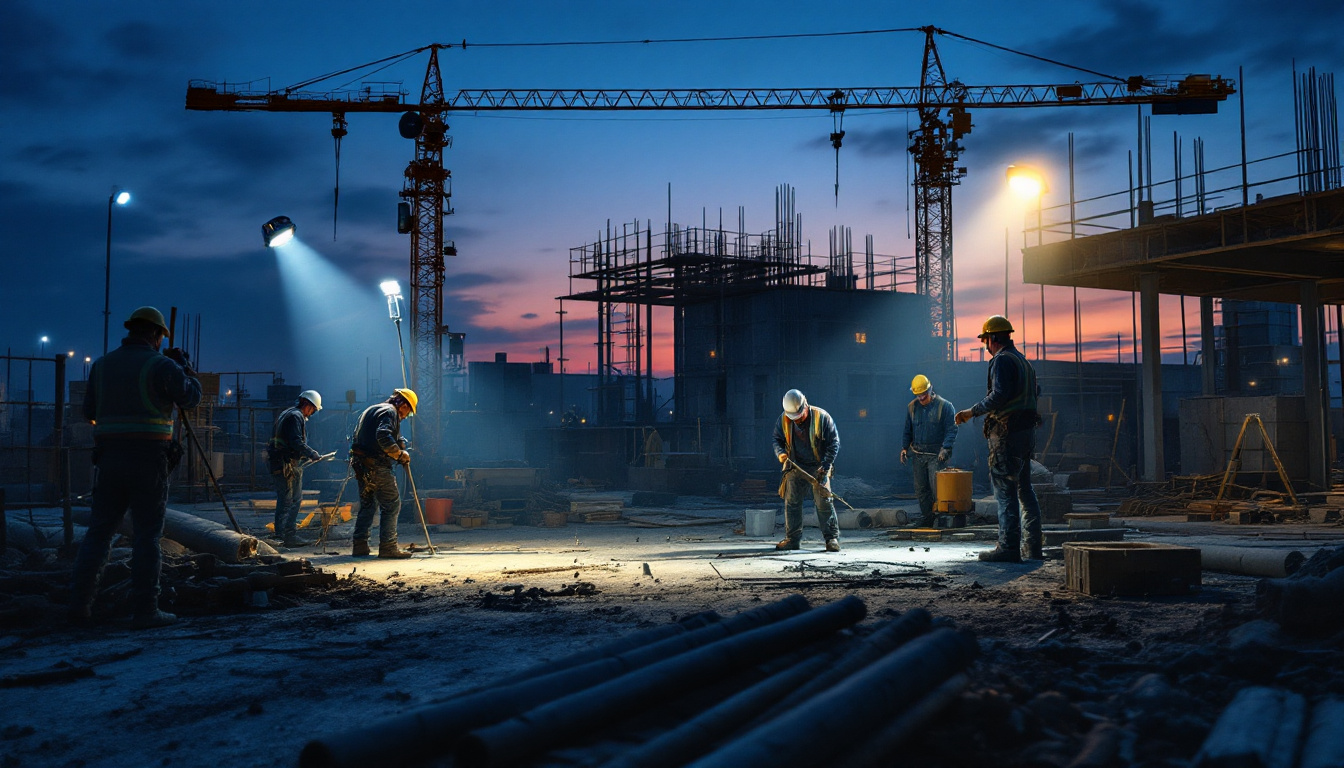

In the ever-evolving world of lighting design and installation, photosensors play a crucial role in enhancing energy efficiency and creating intelligent lighting systems. For lighting contractors, understanding the intricacies of photosensors and how they can be effectively integrated into various projects is essential for standing out in a competitive market. This article delves into the characteristics that distinguish top lighting contractors, with a particular focus on their expertise with photosensors.
Photosensors, also known as light sensors, are devices that detect light levels and adjust lighting accordingly. They are commonly used in both residential and commercial applications to optimize energy consumption and enhance user comfort. By automatically dimming or turning off lights based on ambient light conditions, photosensors contribute to sustainability and cost savings. These devices not only help in reducing electricity bills but also play a crucial role in minimizing carbon footprints, making them an essential component in the quest for greener living environments.
In addition to their energy-saving capabilities, photosensors can also enhance the aesthetic appeal of spaces. For instance, in a home setting, they can be programmed to create different lighting moods throughout the day, adjusting to the natural light available. This dynamic lighting can significantly improve the ambiance of a room, making it more inviting and comfortable for residents and guests alike.
There are several types of photosensors available, each designed for specific applications. The most common types include:
Photosensors have a wide range of applications across various sectors, including:
Moreover, the integration of photosensors with smart home systems allows for even greater control and customization. Homeowners can set schedules or use mobile applications to manage their lighting systems remotely, ensuring that their homes are always well-lit and energy-efficient. This level of automation is increasingly appealing to tech-savvy consumers who prioritize both convenience and sustainability in their living spaces.
For lighting contractors, having a deep understanding of photosensor technology is vital. This expertise not only enhances the quality of installations but also positions contractors as leaders in the field. Clients are increasingly looking for professionals who can provide innovative solutions that incorporate the latest technologies. With the growing emphasis on energy efficiency and sustainability, the role of photosensors in reducing energy consumption and operational costs cannot be overstated. Contractors who are well-versed in these technologies can help clients achieve significant savings while also contributing to environmental conservation efforts.
Top lighting contractors excel in designing intelligent lighting systems that seamlessly integrate photosensors. This involves not only selecting the right type of sensor for the application but also ensuring that the entire lighting system is optimized for performance. Key considerations include:
The lighting industry is rapidly evolving, with new technologies and trends emerging regularly. Top contractors prioritize continuous education and training to stay informed about the latest advancements in photosensor technology. This commitment to learning enables them to offer cutting-edge solutions that meet the demands of modern clients. Networking with industry experts, attending trade shows, and participating in workshops are just a few ways contractors can enhance their knowledge base. Additionally, understanding the integration of smart technologies, such as IoT and AI, into lighting systems is becoming increasingly important, as these advancements allow for greater automation and energy management.
Moreover, as the demand for smart buildings increases, contractors are also challenged to implement photosensor systems that not only respond to ambient light but can also communicate with other building management systems. This interconnected approach allows for more sophisticated control strategies, such as adjusting lighting based on occupancy or time of day, further enhancing energy efficiency. By embracing these trends and technologies, contractors can not only improve their service offerings but also position themselves as forward-thinking leaders in the lighting industry.
Successful lighting contractors understand that a customer-centric approach is key to building lasting relationships and securing repeat business. This involves not only providing high-quality installations but also offering exceptional customer service throughout the project lifecycle.
Top contractors engage in consultative selling, where they take the time to understand the specific needs and preferences of their clients. This approach allows them to recommend tailored lighting solutions that incorporate photosensors effectively. By actively listening to clients and addressing their concerns, contractors can build trust and credibility.
Providing post-installation support is another hallmark of top lighting contractors. After the installation of photosensors and lighting systems, contractors should offer guidance on system operation and maintenance. This not only helps clients maximize the benefits of their new systems but also reinforces the contractor’s commitment to customer satisfaction.
As sustainability becomes a priority for many clients, top lighting contractors are at the forefront of promoting energy-efficient solutions. Photosensors play a significant role in achieving these goals, and contractors who emphasize their benefits are more likely to attract environmentally conscious clients.
Conducting energy audits and assessments is an effective way for contractors to demonstrate their commitment to sustainability. By analyzing a client’s current lighting setup and identifying areas for improvement, contractors can recommend the integration of photosensors to enhance energy efficiency. This proactive approach not only benefits the environment but also helps clients save on energy costs.
Top contractors take the initiative to educate their clients about the benefits of photosensors. This includes explaining how these devices can lead to significant energy savings, reduce carbon footprints, and create more comfortable living and working environments. By providing clear information, contractors empower clients to make informed decisions about their lighting systems.
In today’s digital age, leveraging technology can set top lighting contractors apart from the competition. By utilizing advanced tools and software, contractors can streamline their processes and enhance service delivery.
Many leading contractors use design software to create detailed lighting plans that incorporate photosensors. This technology allows for precise calculations of light levels, energy consumption, and overall system performance. By presenting clients with visually appealing designs and data-driven insights, contractors can effectively communicate the value of their proposed solutions.
Some contractors offer remote monitoring and control solutions for lighting systems equipped with photosensors. This technology enables clients to manage their lighting remotely, making it easy to adjust settings based on changing conditions or preferences. By providing this level of convenience, contractors can enhance the overall client experience.
In the lighting industry, reputation is everything. Top contractors understand that their success hinges on the quality of their work and the satisfaction of their clients. Building a strong reputation involves consistently delivering exceptional results and maintaining high standards of professionalism.
One effective way to build a reputation is by showcasing successful projects that highlight the contractor’s expertise with photosensors. This can be done through case studies, testimonials, and portfolio displays. By demonstrating past successes, contractors can instill confidence in potential clients and differentiate themselves from competitors.
Active participation in industry events, trade shows, and professional organizations can also enhance a contractor’s reputation. Networking with other professionals and staying engaged with industry trends allows contractors to establish themselves as thought leaders in the field. This visibility can lead to valuable referrals and new business opportunities.
In a competitive landscape, lighting contractors who excel in integrating photosensors into their projects stand out as industry leaders. By understanding the technology, adopting a customer-centric approach, emphasizing sustainability, leveraging technology, and building a strong reputation, contractors can differentiate themselves and thrive in the lighting industry. As the demand for energy-efficient and intelligent lighting solutions continues to grow, those who embrace innovation and prioritize client satisfaction will undoubtedly lead the way.
Ready to elevate your lighting projects with the best photosensors and spec-grade lighting products? Look no further than LumenWholesale, where we provide contractors with superior lighting solutions at unbeatable wholesale prices. Our commitment to quality, affordability, and convenience ensures that you have access to the most reliable and high-performance lighting for every project. Plus, with free shipping on bulk orders, you can save even more without any hidden fees. Don’t compromise on your lighting needs. Wholesale Lighting at the Best Value is just a click away. Experience the LumenWholesale difference today!

Discover essential insights into construction and portable lighting tailored for lighting contractors.

Discover why purchasing sensors and timers in bulk from local distributors might not be the best choice.

Discover why purchasing track lighting in bulk from local distributors might not be the best decision.

Discover how Hi-Lite technology is transforming the lighting industry by significantly reducing costs for contractors.
Get notified when NEW deals are released.
Optimize your budget with wholesale discounts.
Only top-quality, specification-grade lighting products.
No additional costs at checkout - what you see is what you pay.
We understand the unique needs of contractors.